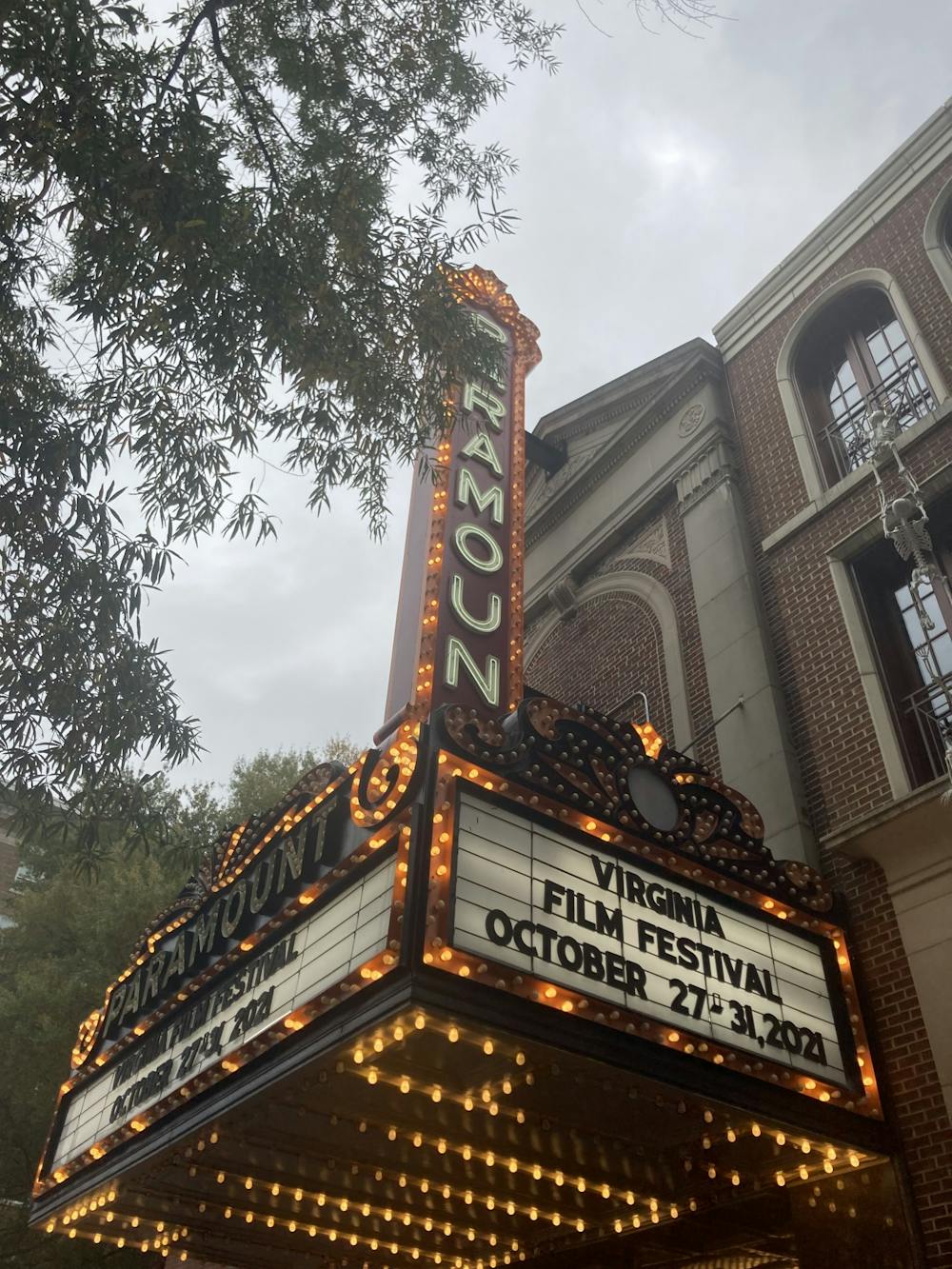This Wednesday, masked audiences packed into the historic Paramount Theater to revel in the joy of cinema together — marking the return of the in-person Virginia Film Festival. University President Jim Ryan and Jody Kielbasa, the University's vice provost of the arts and the director of VAFF, provided opening remarks before the sold-out showing of the opening night film, “The French Dispatch.”
Ryan noted that although he, like many others, had become accustomed to at-home film viewing experiences in the past year, there is still “nothing like the shared experience of watching a film” and claimed that this unique experience is “what the festival represents year after year.” Kielbasa shared a similar sentiment in his speech that followed — expressing great joy at the sight of an excited film audience sitting altogether. Certainly, this comical and endearing film by the acclaimed Wes Anderson — known for his charmingly quirky works like “Moonrise Kingdom” and “The Grand Budapest Hotel” — made for a great opening act in this festival’s lineup, as audiences were able to laugh and cheer at its joyous moments altogether.
The film follows the lives and writings of the expatriate contributors to the titular “French Dispatch” — a New Yorker-style literary magazine that is made in the fictional town of Ennui, France and exported to American audiences. The publication is set to publish its final issue, however, following the death of its beloved, pragmatic editor-in-chief Arthur Howitzer Jr.— played wonderfully by the frequent Anderson star Bill Murray.
The format of this last issue creates the general plot setup for the film, with an opening travel guide, three main stories and a somber epilogue all bound into one story just like the magazine itself. Throughout the stories, there are a number of familiar faces to be spotted in the star-studded cast: Willem Dafoe, Timothée Chalamet and Saoirse Ronan all make appearances in the cobblestone streets of Ennui, to name just a few.
Anderson is definitely well-known for his visual flair as a filmmaker — creating stunningly symmetrical and detailed environments in nearly all of his major works. These picture-perfect settings give the world a dioramic quality, and lend his films a fascinating surreality. The iconically beautiful city streets of France prove to be a perfect place for Anderson to bring his style, as all of the idealism that wistful Americans associate with France is captured wonderfully in the picturesque locales of the film.
All of his hallmark kitchiness is also on full display here — in Parisian buildings with serpentine staircases and theatrical cafes bursting with revolutionary fervor. Even the writers’ offices are littered with evocative details, taking us into their personal worlds and minds through visuals alone. All of this creates a truly luscious and detailed cinematic world that will likely make viewers wish they could pause the screen and take it all in.
The world of this movie is not just a series of stagnant paintings though, but a bursting and rich recreation of an artistic community. Anderson’s visual stylization is accompanied by witty, memorable dialogue and a fascinatingly varied cast of characters. The vignette-style storytelling also gives the filmmaker an ability to explore a number of narrative dimensions. Even the short stories have smaller stories, flashbacks and tangents within themselves. This multi-story structure gives the impression that this fictional town and each person within it has an abundance of rich histories that we are only getting a mere snapshot of.
The elaborate tales covered by the journalists are deeply personal human interest stories that capture the complex emotional worlds of the people and subjects they cover but also, most prominently, they represent the unique spirits of the writers themselves. Short stories are told directly from the authors’ points of view, showcasing their writing process as an intimate and powerful experience. Writer’s voices are a major part of the stories they tell — and this film explores that relationship in an interestingly literal way.
This movie is also an incredibly fast-paced and dense viewing experience. Many expositional moments and lines of dialogue happen at breakneck speed, and the gorgeous visuals seem to fly past as soon as they are seen. The fleeting nature of moments in this film creates an interesting effect — mimicking the fast-paced journalistic world of its characters — but it also can leave viewers wanting more or feeling as if they missed out on some things. This speed can also cause the movie to shift rapidly between moments of comical absurdity and more emotional moments, however, which can be a bit jarring. Still, the fast tempo and narrative density of the film is very unique, and could make multiple viewings of the film very rewarding.
Some of the most endearing scenes of the film come in the transitional moments between stories, in which Arthur Howitzer Jr. sits down with the writers to discuss their work. He remarks on the stories that the audience has just seen with subtle empathy, pride and criticism. In these small conversations, we see the work and emotion that goes into a publication like the French Dispatch, and the relationships that surround this work.
In this way, “The French Dispatch” is clearly an ode to the world of journalism, but not the hard-hitting, world-changing breaking news that is often covered in journalism movies. Instead, the film focuses on intimate, personal stories and explores what they mean to both those who read them and those who write them. It is hard to believe that film — a medium that is so focused on the visual world — could be used to sweetly and powerfully celebrate the written word, but this film certainly does just that.







